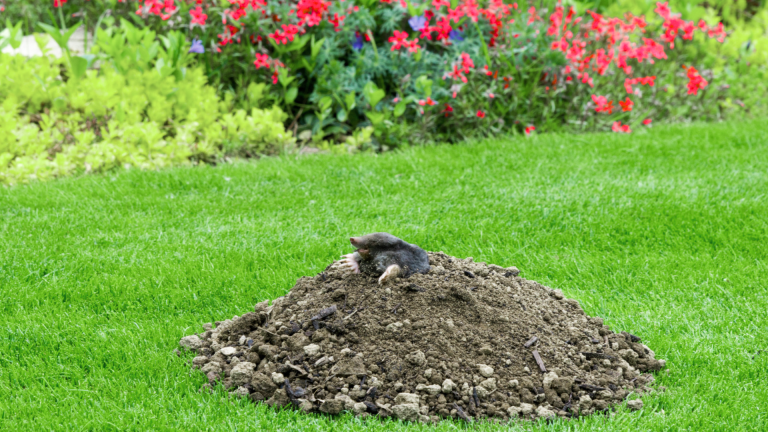If you’ve spotted little mounds of dirt or raised lines in your yard, you might be dealing with moles. These tiny animals live underground and can quickly turn your smooth lawn into a bumpy mess.
But are moles really bad for your yard? The answer isn’t so simple. While they can damage grass and make your yard look messy, they also help the soil and eat bugs that harm your plants. In this blog, we’ll look at the good and the bad sides of having moles in your yard.
We’ll also share tips on how to identify them, the damage they can cause, and what you can do to prevent them, if needed. Whether you’re trying to fix a mole problem or just curious, this guide will help you understand how moles affect your lawn and what steps you can take.
Understanding Moles: Nature’s Underground Dwellers
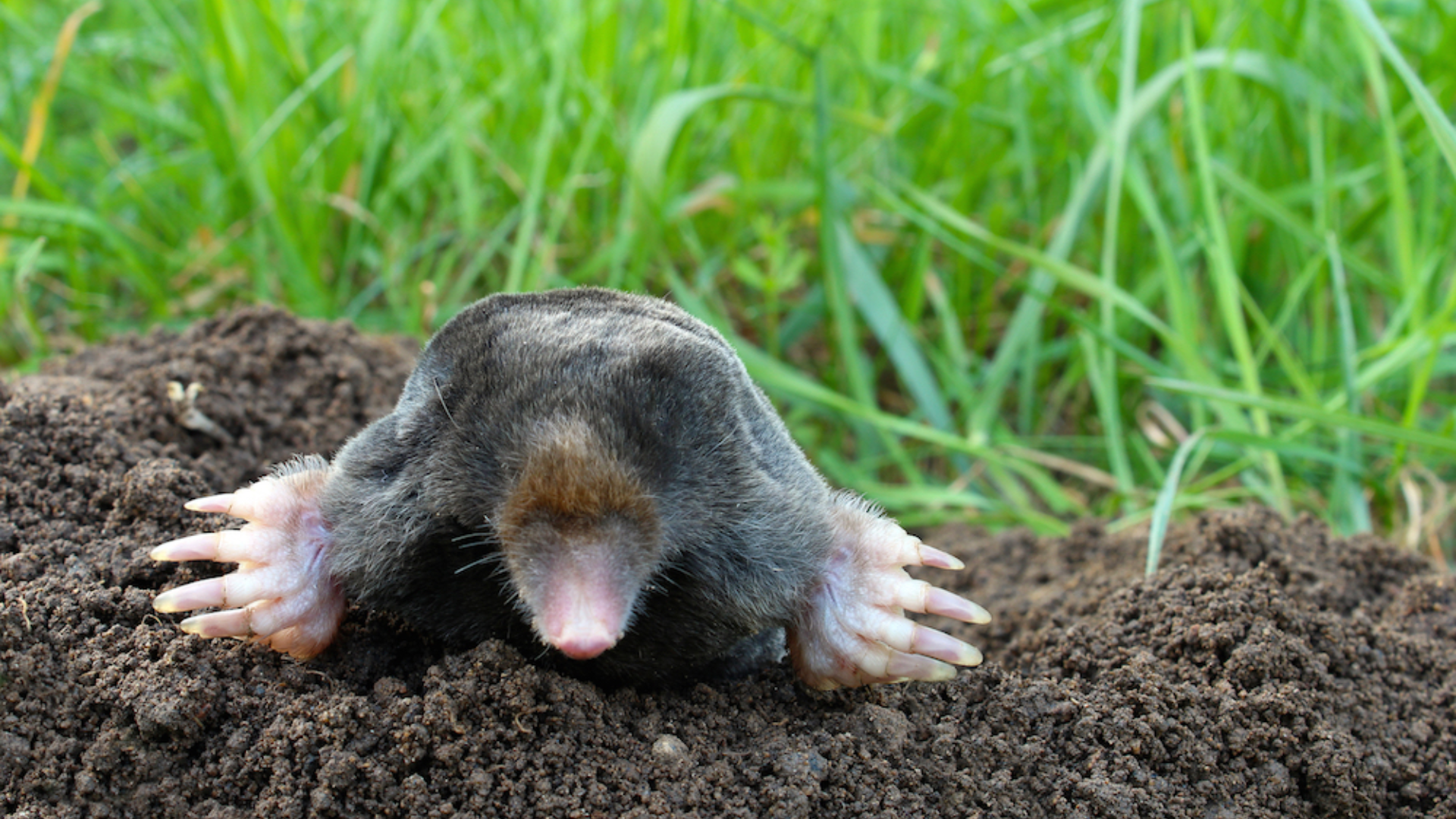
Before deciding whether moles are a problem, it’s helpful to understand what they are and what they do. Moles are small animals that live underground and rarely come above the surface. They have soft gray or brown fur, small eyes, and big front feet that are great for digging. Most people don’t see them, but their tunnels and mounds are hard to miss.
Moles aren’t after your plants—they mostly eat bugs, especially earthworms and grubs. In fact, one mole can eat hundreds of insects a day. Their constant digging helps loosen the soil, which makes it easier for air, water, and roots to move through it. This can actually be good for your yard in some ways.
Understanding what moles are and how they live is the first step in deciding whether to let them stay or send them packing.
Signs of Mole Activity in Your Yard
Moles are sneaky, but they leave behind some pretty clear clues. If you know what to look for, it’s easy to tell if they’re around. You probably won’t see the moles themselves, but their tunnels and dirt piles give them away.
Visual Indicators
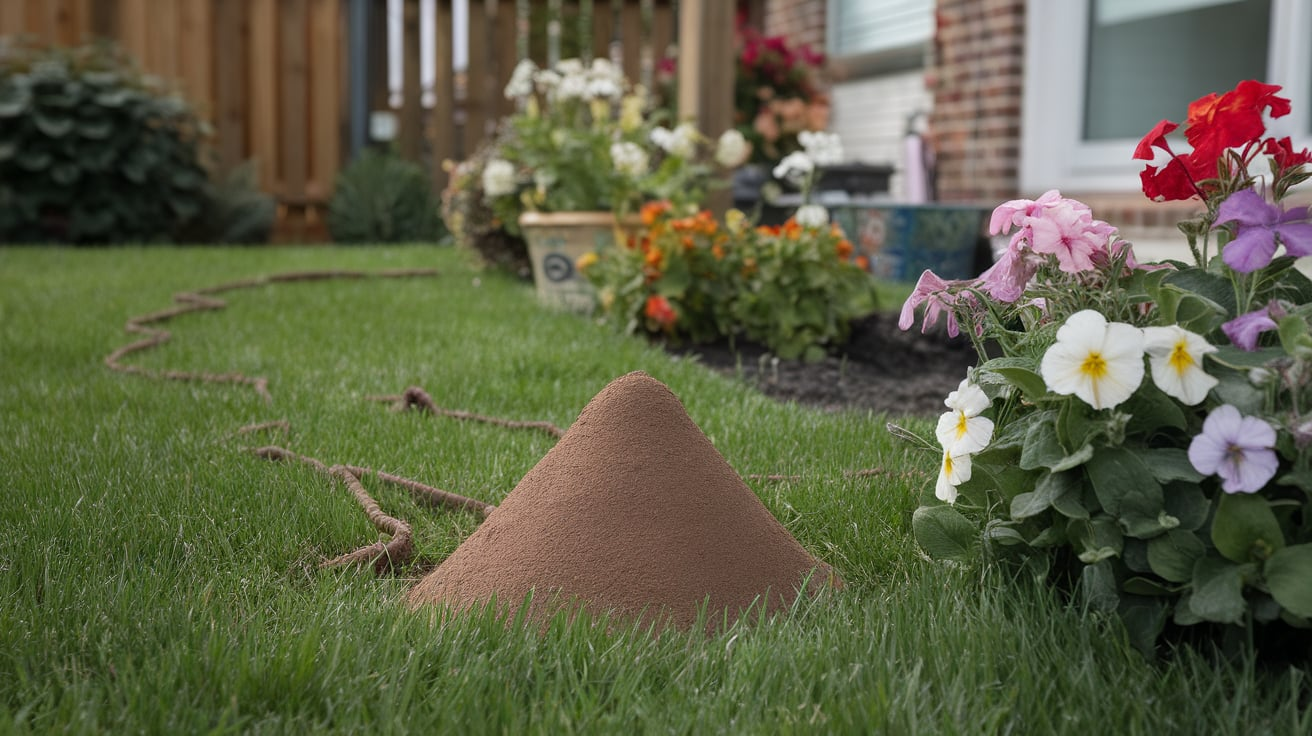
- Raised ridges that snake across your lawn are surface tunnels. Moles make these when they dig just below the grass.
- Small dirt mounds or hills are called molehills. These are made when moles push soil to the surface while digging deeper tunnels.
- Soft or uneven ground where you step may mean there are tunnels underneath.
Distinguishing from Other Pests
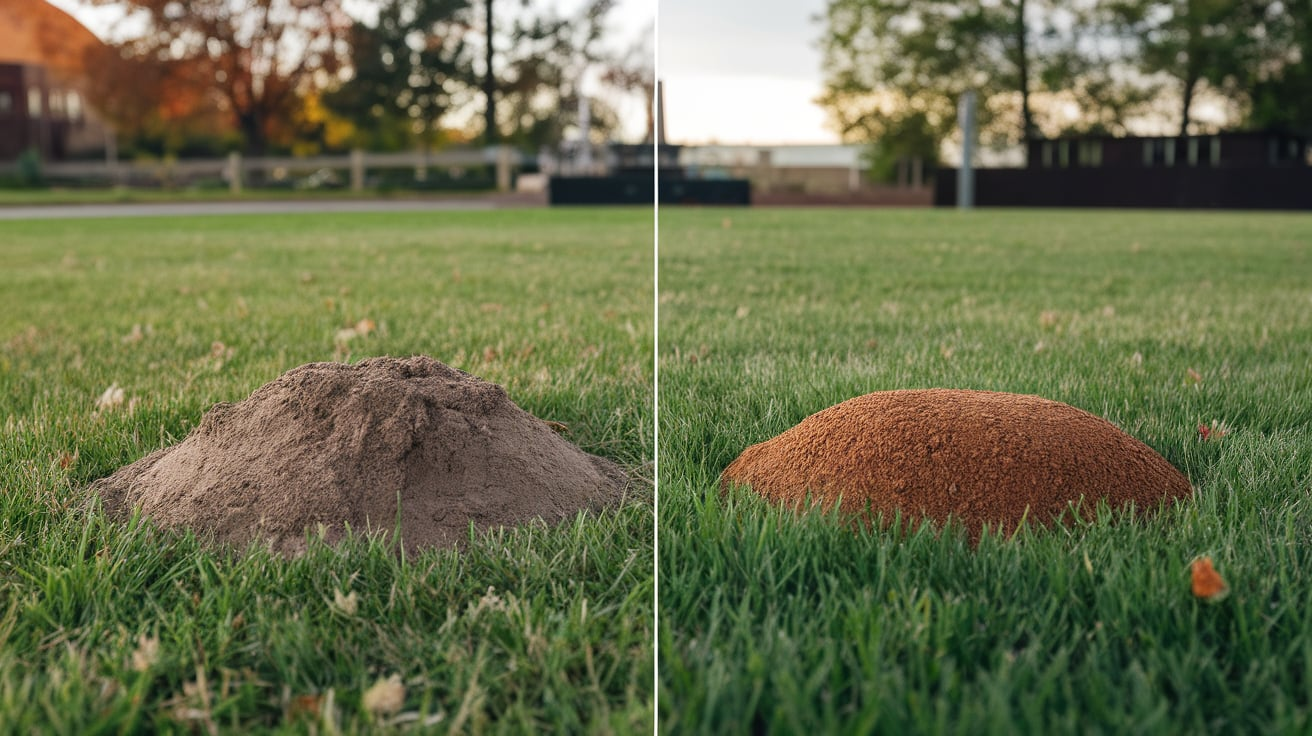
- Moles don’t eat your plants, but their digging can disturb roots. If your plants look damaged, it could be from the tunnels, not the mole itself.
- Gophers and voles also dig underground, but they often eat plants and roots. Their mounds are messier and shaped differently than molehills.
Once you spot these signs, you’ll have a better idea of what you’re dealing with—and how to handle it.
The Impact of Moles on Your Lawn and Garden
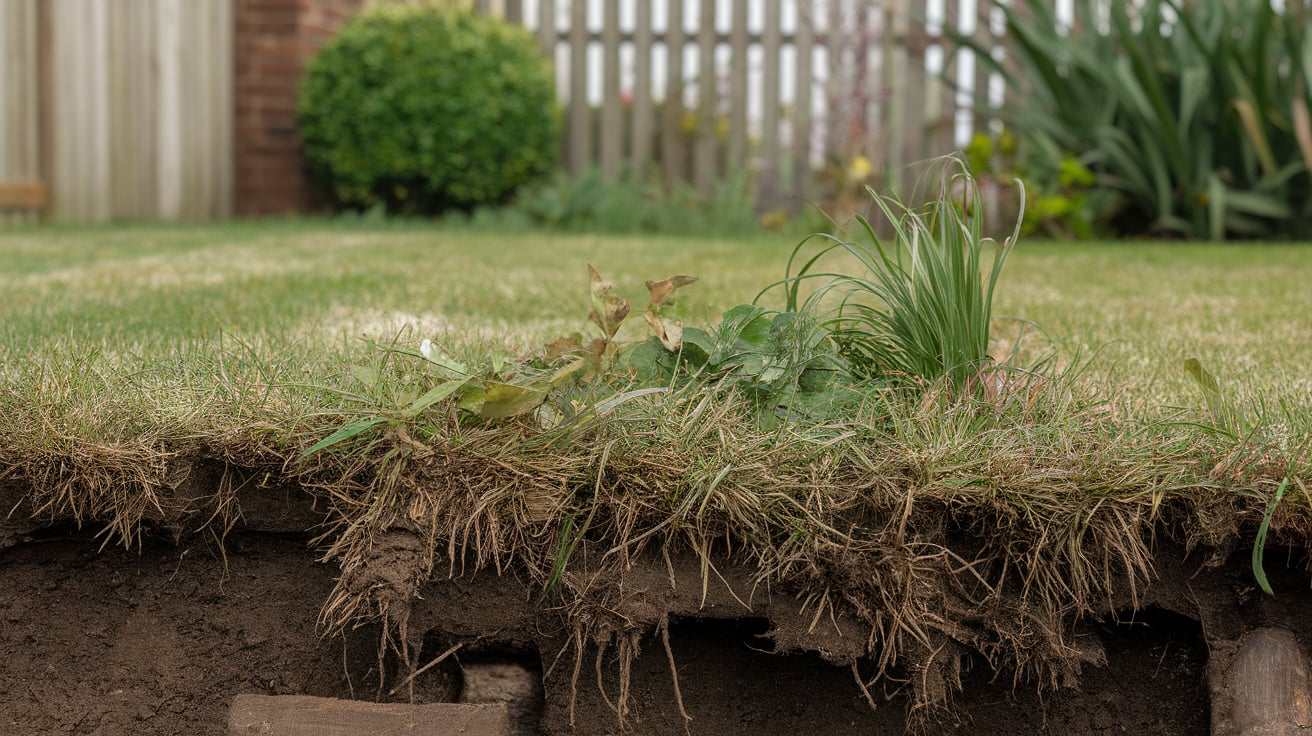
Moles aren’t always the bad guys, but their digging can definitely cause problems, especially if they stick around too long. Even though they don’t eat plants, the way they move underground can mess with your yard.
- Tunnels can break plant roots, which leads to weak or dying grass, flowers, or vegetables.
- Molehills make your lawn bumpy and harder to mow or walk on safely.
- Raised ridges can dry out the soil, which can stress plants and lead to brown patches.
- Tunnels attract other pests, like voles, which do eat plants and roots.
While moles don’t mean to hurt your yard, their digging often leaves behind more damage than you’d expect. That’s why it’s important to manage the problem early.
Benefits of Having Moles in Your Yard
Believe it or not, moles aren’t all bad. In fact, they can do some good for your yard, especially when it comes to soil health.
As they dig, moles naturally loosen compacted soil. This helps air, water, and nutrients reach plant roots more easily. Their tunneling acts like free aeration, which is something many gardeners pay for.
Moles also eat harmful insects like grubs and beetle larvae, which can damage your grass and garden plants. By keeping these pests under control, moles help reduce the need for chemical pesticides. Although their tunnels may appear messy, they’re actually a sign that the soil is alive and active.
If the damage is minor and your plants are still healthy, you might consider leaving the moles alone. They could be doing more good than harm.
Natural Mole Control Methods
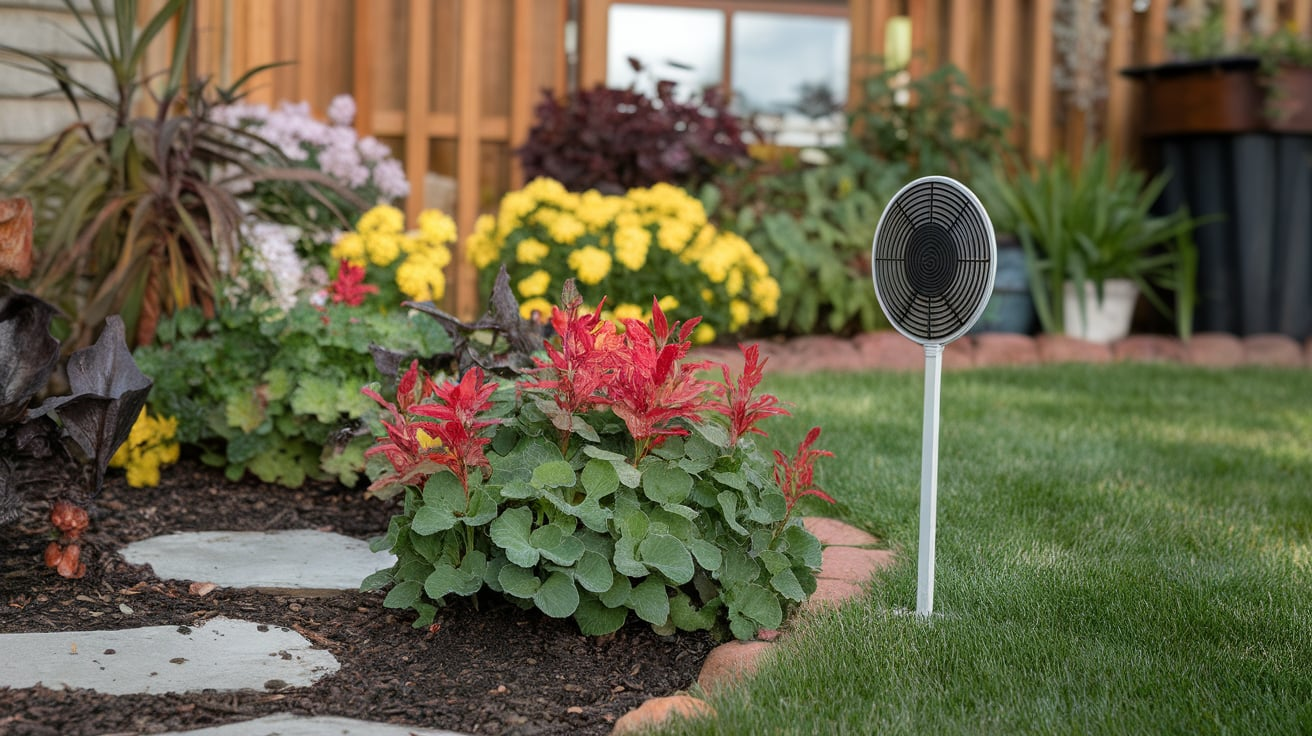
If moles are causing too much trouble in your yard, you don’t have to reach for harsh chemicals or traps right away. There are plenty of natural and humane ways to encourage moles to move along without harming them. These methods work best when started early, before a full tunnel network is built.
Habitat Modification
- Avoid overwatering your lawn. Damp soil attracts earthworms, which in turn attract moles.
- Keep your yard clean and trimmed. Remove thick mulch, leaf piles, and other debris that create a cozy home for bugs and moles.
- Seal off garden beds. Use wire mesh or underground barriers to protect special areas.
Repellents and Deterrents
- Castor oil-based repellents are a popular choice. They don’t hurt moles, but they make the soil smell and taste bad to them.
- Try natural scents like garlic or cayenne pepper. These smells can drive moles away.
- Plant mole-repellent plants such as marigolds, daffodils, or alliums, which naturally discourage digging.
These gentle methods take time and patience, but they can help guide moles away from your yard without harm. It’s a good place to start before trying anything more serious.
Best Plants That Moles Avoid
If you want to keep moles away without using traps or chemicals, planting certain flowers and herbs can help. Some plants have strong smells or tastes that moles don’t like. These plants won’t harm moles, but they’ll make your yard less welcoming for them.
- Daffodils: These bright flowers are toxic to many pests and are known to keep moles away.
- Marigolds: Their strong scent can deter moles and even some insects.
- Alliums (like onions and garlic): These have a sharp smell that moles avoid.
- Castor bean plants: They’re not for every garden because they’re toxic if eaten, but they’re known mole deterrent.
- Fritillaria: This plant gives off a skunky smell underground that moles dislike.
You can plant these around the edges of your yard or near gardens and flower beds. They look nice, and they work as a natural line of defense against unwanted underground visitors.
Preventing Future Mole Problems
Once you’ve handled a mole issue, it’s smart to take steps to keep them from coming back. Moles like certain lawn conditions, so making a few changes can help keep them away for good.
- Keep your lawn well-drained. Avoid overwatering, which makes soil soft and full of earthworms—mole favorites.
- Mow and trim regularly. A clean yard gives moles fewer places to hide or dig.
- Use natural mole repellents once a month. Even after they’re gone, the scent can keep them away.
- Check for new signs often. Catching mole activity early makes it easier to stop.
A few small habits can make a big difference. With some care and consistency, you can keep your lawn healthy and mole-free all year long.
When to Consider Professional Help
Sometimes, no matter how many DIY methods you try, the moles just won’t leave. If your yard is covered in tunnels and molehills, or if the damage is getting worse, it might be time to call in a professional.
Experts can inspect your yard, figure out how many moles you’re dealing with, and choose the safest and most effective way to remove them.
Professional pest control companies have access to tools and techniques that aren’t always available to homeowners. They can also make sure the problem doesn’t return by helping you improve your lawn’s condition and prevent future infestations.
If you’ve tried natural methods and the moles keep coming back—or if you’re dealing with large areas of damage—getting help from a pro might be the smartest move. Sometimes, expert advice is worth it to protect your lawn.
Conclusion
Moles can be both helpful and harmful, depending on the situation. On one hand, they improve your soil and eat pests that damage your plants. On the other hand, their constant digging can leave your lawn looking rough and uneven. The key is knowing when to let them be and when to take action.
If mole activity is light and not hurting your yard, you might be better off leaving them alone. But if they’re causing real damage or taking over, it’s okay to step in with natural methods—or even call a professional if needed.
By understanding how moles live and what they’re really doing underground, you’ll be able to make smarter decisions for your yard. With the right balance, you can enjoy a healthy lawn and keep mole problems under control without harming the environment.


